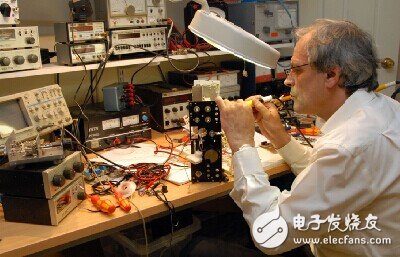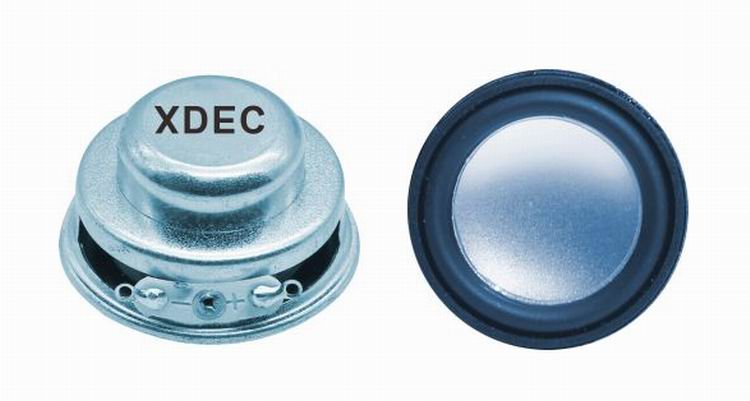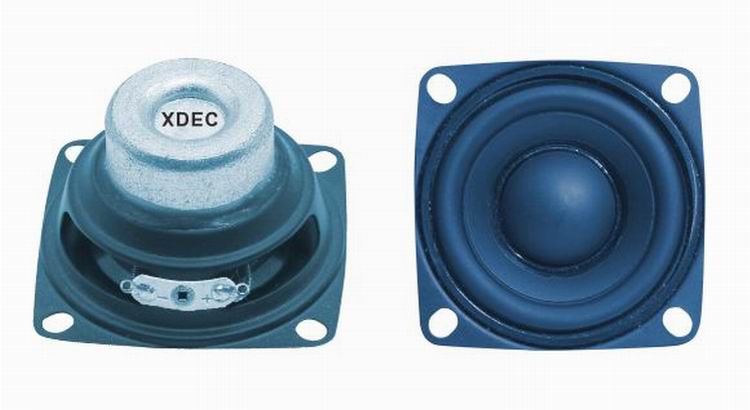The purpose of the audio amplifier is to reproduce the input audio signal on the audible output component to provide the required volume and power levels - to ensure reproducible fidelity, high efficiency and low distortion. In the face of this task, Class D amplifiers show many advantages.
Audio refers to a frequency range of about 20 Hz to 20 kHz, so an audio amplifier must have excellent frequency response characteristics in this band (the frequency range with better frequency response characteristics can be narrower when driving a limited bass and tweeter) ). The demand for power capability varies greatly, depending on the application requirements, from the mW level of the headset to the number of W on the TV or PC, to the "mini" home stereo, car stereo, and the highest It is a more powerful home and commercial audio system for theaters and auditoriums with powers of hundreds of W or more.

The most straightforward, analog implementation of an audio amplifier is to have the transistor operate in linear mode, allowing the output voltage to vary with the input signal voltage in a certain ratio. The forward voltage gain is often very high (at least 40 dB). If the forward gain is part of the feedback loop, the total loop gain will also be high. Feedback is often used in circuits because of the high loop gain that provides higher performance—suppressing the distortion caused by the nonlinearity of the forward path and reducing power supply noise by increasing the power supply rejection (PSR).
In conventional transistor amplifiers, the transistors on the output stage need to provide a continuous output current at all times. A variety of implementations that the sound system can take include Class A, Class AB, and Class B. Among these circuits, even the most efficient linear output stage, the power dissipation is large compared to the class D amplifier. This difference reflects the fact that Class D amplifiers offer significant advantages in many applications because less power dissipation means lower heat generation, board space and cost savings, and extended battery operating time in portable systems.
Power dissipation occurs in all linear output stages because the generation of Vout inevitably results in non-zero IDS and VDS on at least one of the output transistors. The amount of power dissipation is largely determined by the biasing method of the output transistor.
The Class A architecture uses a transistor in the architecture as a DC current source that provides the maximum audio current required by the speaker. Class A output stage can provide good sound quality, but because the output stage transistor tends to flow a large DC bias current (which we don't want), this current cannot be supplied to the speaker (this is instead We hope that) will result in excessive power dissipation.
Class B loudspeakers cancel the DC bias current and the power dissipated is greatly reduced. The output transistors are separately controlled in a push-pull manner such that one of the devices supplies a forward current to the speaker and the other absorbs the negative current. This reduces the power dissipation of the output stage, with only the signal current flowing through the transistor. However, the sound quality of the Class B circuit is poor because it operates in a non-linear state (crossover distortion) when the output current crosses zero and the transistor switches between on and off states.
Class AB output circuits are a compromise between Class A and Class B circuits that have a certain DC bias current, but this current is much less than the current used in a pure Class A design. The small DC bias current is sufficient to prevent crossover distortion, thus ensuring good sound quality. Power dissipation, although between Class A and Class B, is generally closer to Class B. Class AB circuits must take some control mechanism similar to Class B circuits in order to be able to provide or absorb large output currents.
A different kind of topology - the emergence of Class D amplifiers, is fortunate, it consumes far less power than any other circuit. Its output stage switches back and forth between positive and negative supplies to create a voltage pulse train. This waveform is advantageous for reducing power dissipation because the output transistor has zero current when no switching action occurs, and the voltage across it is low when the current is turned on, so the IDS & TImes; VDS value is smaller.
Because most audio signals are not pulse trains, the audio input must be converted to pulses by a modulator. The frequency components of these pulses include both the desired audio signal and the significant high frequency energy introduced by the modulation process.
A low-pass filter is often placed between the output stage and the speaker to minimize electromagnetic interference (EMI) and to avoid excessively high frequency energy in driving the speaker. The filter should be lossless (or nearly lossless) in order to guarantee the low power dissipation of the switching output stage. The filter is usually composed of a capacitor and an inductor, and the only power dissipating component that is intentionally introduced is the speaker itself.
Robot speaker is a kind of speaker unit which is used for multimedia devices. Multimedia Speakers have loud sound, wide frequency response range and rich bass.
Our main multimedia speakers are full ranges speakers units:
1) From the diameter: we have speakers in 1" ~ 3".
2) From the power output, we have speakers of 2W ~ 15W.


FAQ
Q1. What is the MOQ?
XDEC: 2000pcs for one model.
Q2. What is the delivery lead time?
XDEC: 20 days for normal orders, 15 days for urgent orders.
Q3. What are the payment methods?
XDEC: T/T, PayPal, Western Union, Money Gram.
Q4. Can you offer samples for testing?
XDEC: Yes, we offer free samples.
Q5. How soon can you send samples?
XDEC: We can send samples in 3-5 days.
Robot Speaker
Robot Speaker ,Bluetooth Robot Speaker,Smart Robot Speaker,Mini Robot Speaker
Shenzhen Xuanda Electronics Co., Ltd. , https://www.xdecspeaker.com